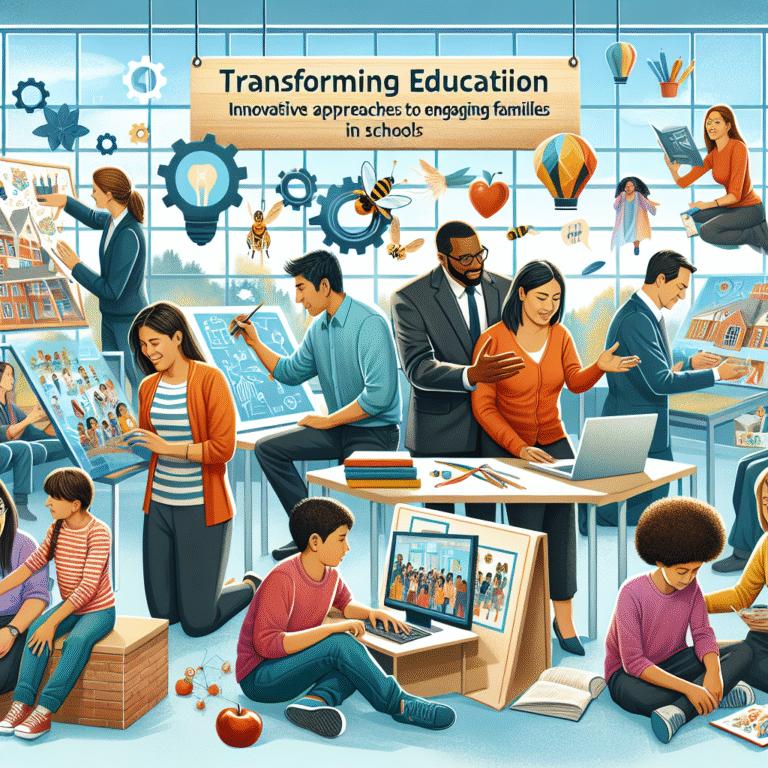
Introduction
In a world that is increasingly interconnected and complex, social and emotional learning (SEL) has emerged as a transformative approach to education. It’s more than just buzzwords; SEL fosters the skills necessary for success in both the personal and professional spheres. But why should we confine its benefits solely to the walls of classrooms? The concept of From Classrooms to Communities: The Ripple Effect of SEL on Society highlights the profound influence SEL can have beyond education, shaping resilient individuals and stronger communities.
Imagine a society where empathy, respect, and collaboration are not mere ideals but practiced norms. From reducing bullying in schools to lowering crime rates in neighborhoods, the implications of SEL reach far and wide. This article delves into the far-reaching ramifications of SEL, showcasing its relevance to today’s societal challenges.
What is Social and Emotional Learning (SEL)?
Before exploring the ripple effect, let’s define SEL. It’s a process that helps individuals—particularly children and adolescents—develop skills to manage emotions, set goals, show empathy for others, establish positive relationships, and make responsible decisions. According to CASEL (Collaborative for Academic, Social, and Emotional Learning), SEL includes five key competencies:
- Self-Awareness: Recognizing one’s emotions and values.
- Self-Management: Regulating emotions and behaviors.
- Social Awareness: Understanding and empathizing with others.
- Relationship Skills: Building and maintaining healthy relationships.
- Responsible Decision-Making: Making ethical, constructive choices.
By nurturing these competencies, students are equipped with tools that extend beyond academic success, influencing their communities and, ultimately, society at large.
The Foundation: Benefits of SEL in Classrooms
The first ripple begins within educational institutions. Implementing SEL programs in schools leads to heightened academic performance, improved behavior, and enhanced emotional well-being among students. Research confirms these benefits, highlighting that schools integrating SEL show:
-
Academic Gains: According to a meta-analysis of over 200 studies by Durlak et al. (2011), students participating in SEL programs demonstrate an 11-percentile-point gain in academic achievement compared to those who do not.
-
Reduced Behavioral Issues: Schools that prioritize SEL notice reductions in disciplinary referrals and behavioral problems.
- Enhanced Emotional Well-Being: Students report lower levels of stress and anxiety when engaged in SEL curricula.
These foundational benefits set the stage for a broader societal impact, serving as the first ripple in the journey from classrooms to communities.
Case Study: The Collaborative for Academic, Social, and Emotional Learning (CASEL)
One of the pioneers in fostering SEL in schools, CASEL has implemented numerous successful programs across the United States. Their work has shown that schools mastering SEL directly link to improvements in community relations. Schools adopting CASEL’s Integrative Framework notice marked transformations not just in students but also in the quality of interaction among families and community members.
Analysis
The CASEL model demonstrates how SEL can serve as a catalyst for nurturing healthier relationships, creating a ripple effect that extends beyond students to their families and communities.
Expanding the Ripple: SEL in Communities
As students develop socially and emotionally at school, they carry those skills into their communities. The real-world applications of SEL can lead to substantial changes. Consider the following impacts:
1. Reduced Violence and Bullying
Communities that emphasize SEL often see a decrease in violence and bullying. Research indicates that SEL initiatives can cultivate a culture of respect, where individuals are less likely to engage in harmful behaviors.
- Statistics: According to a meta-analysis published in the Journal of School Psychology, schools with comprehensive SEL programs report a 19% decrease in peer aggression.
2. Enhanced Leadership and Civic Engagement
When individuals develop strong social skills, they become more engaged citizens, ready to take on leadership roles and serve their communities. SEL encourages empathy and understanding, essential traits for any civic-minded individual.
Case Study: The Youth Leadership Institute
The Youth Leadership Institute empowers young people to lead in their communities by integrating SEL principles into their programming. Participants learn conflict resolution, teamwork, and communication skills, which translate into active community participation.
Analysis
Participants in this program have organized community clean-ups, mentoring programs, and fundraising events, demonstrating how SEL can embolden youth to positively affect their communities.
3. Improved Mental Health Outcomes
Communities that prioritize SEL see better mental health indicators. Reducing stigma around mental health through SEL education leads to individuals feeling more comfortable seeking help.
Case Study: The Mental Health Initiative in Schools
This program focuses on integrating SEL with mental health resources. Schools that adopt this approach observe a greater willingness among students to discuss their mental health challenges, leading to timely support.
Analysis
By normalizing mental health conversations in educational settings, communities foster an environment where individuals are equipped to support one another.
Creating Inclusive Spaces: The Role of SEL
For SEL to create a significant impact, inclusivity must also be prioritized. SEL can serve as a bridge in diverse communities, fostering connections among individuals from different backgrounds. Here’s how:
1. Emphasizing Diversity and Equity
Incorporating SEL in educational curricula promotes understanding and acceptance among students. This not only enriches their learning experience but also helps cultivate an inclusive community ethos.
2. Building Cultural Competence
SEL programs that incorporate cultural narratives allow students to learn from one another’s backgrounds. By understanding diverse perspectives, students can better appreciate their peers’ experiences.
Case Study: Ethnic Studies in High Schools
Integrating ethnic studies into SEL curricula allows students to engage deeply with diverse cultural perspectives, cultivating respect and empathy for all community members.
Analysis
This approach helps reduce racial and cultural tensions, fostering a sense of belonging and collective identity.
Data-Driven Success: Measuring the Impact of SEL
To further understand the ripple effect of SEL, we must examine the data that supports these claims. Metrics such as academic performance, behavioral referrals, and community engagement can offer insights into the effectiveness of SEL initiatives.
Table 1: Impact of SEL on Academic Performance and Behavior
| Year | Academic Gains (%) | Decrease in Behavioral Referrals (%) |
|---|---|---|
| 2018 | 11 | 19 |
| 2019 | 12 | 22 |
| 2020 | 10 | 18 |
As the data illustrates, schools investing in SEL experiences consistent improvements in both academic and behavioral metrics.
Final Ripple: Long-Term Societal Change
When SEL seeds the foundations of individual growth, we witness profound societal transformations. Imagine communities filled with individuals who are empathetic, resilient, and responsible. These traits foster improved workplaces, lower crime rates, and enhanced public health.
As SEL propagates through communities, it encourages social networks that advocate for education reforms, mental health awareness, and community safety—all contributing to a more harmonious society.
Conclusion
The journey From Classrooms to Communities: The Ripple Effect of SEL on Society is one filled with promise. By investing in SEL within educational contexts, we are laying the groundwork for a future where respect, understanding, and collaboration thrive. As we foster the next generation of empathetic leaders, we not only change lives within the classroom but also contribute to the health of our wider communities.
To maximize the impact of SEL, it is imperative for educators, community leaders, and policymakers to collaborate. The benefits are clear, the data is compelling, and the potential for positive change is limitless.
FAQs
1. What is the goal of SEL?
The primary goal of SEL is to equip individuals with the skills necessary to manage emotions, build relationships, and make responsible decisions, ultimately ensuring emotional intelligence and mental well-being.
2. How can parents reinforce SEL at home?
Parents can reinforce SEL by modeling emotional awareness, encouraging open conversations about feelings, and promoting empathy through discussions and activities that involve teamwork and collaboration.
3. What age groups benefit most from SEL?
While SEL can benefit individuals of all ages, early intervention in childhood (preschool and elementary school) has shown to yield more significant long-term positive effects.
4. How can communities implement SEL programs?
Communities can implement SEL programs by collaborating with local schools to develop community-based initiatives, offering workshops or training sessions, and integrating SEL principles into local youth programs.
5. What challenges exist in implementing SEL?
Challenges include resistance to changes in educational curricula, lack of funding, and the necessity for training educators to deliver SEL effectively. Overcoming these obstacles requires commitment and collaboration from various stakeholders.
In summary, embracing SEL is not merely an educational philosophy but a societal imperative. Let us harness its power to weave a richer, more compassionate social fabric, creating ripples that will last for generations to come.


















